
Celebrating Independence With Triumph
- Aug 17, 2018
- Views : 2676

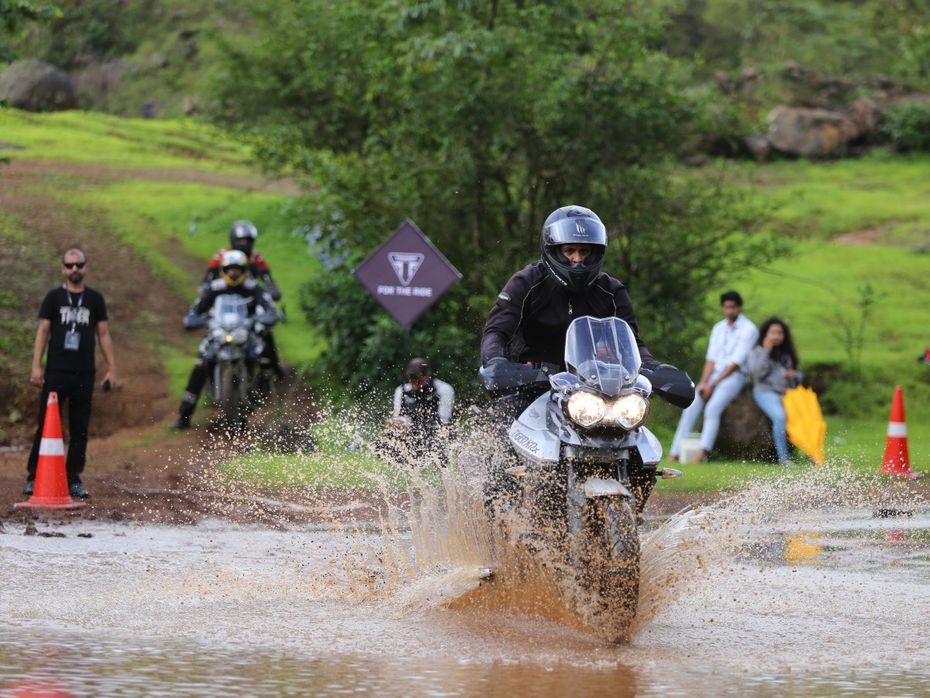
Off-road riding is a different ball game, you have to learn some riding techniques and unlearn many more to survive and thrive in it. We jumped into the deep end and hit the dirt with some Triumph Tiger 800’s at the Triumph Tiger Trails. This event is similar to the Triumph Tiger Academy (read about it here) except that the obstacles here are natural rather than man-made. Here’s the survival guide from a day-long mud riot.
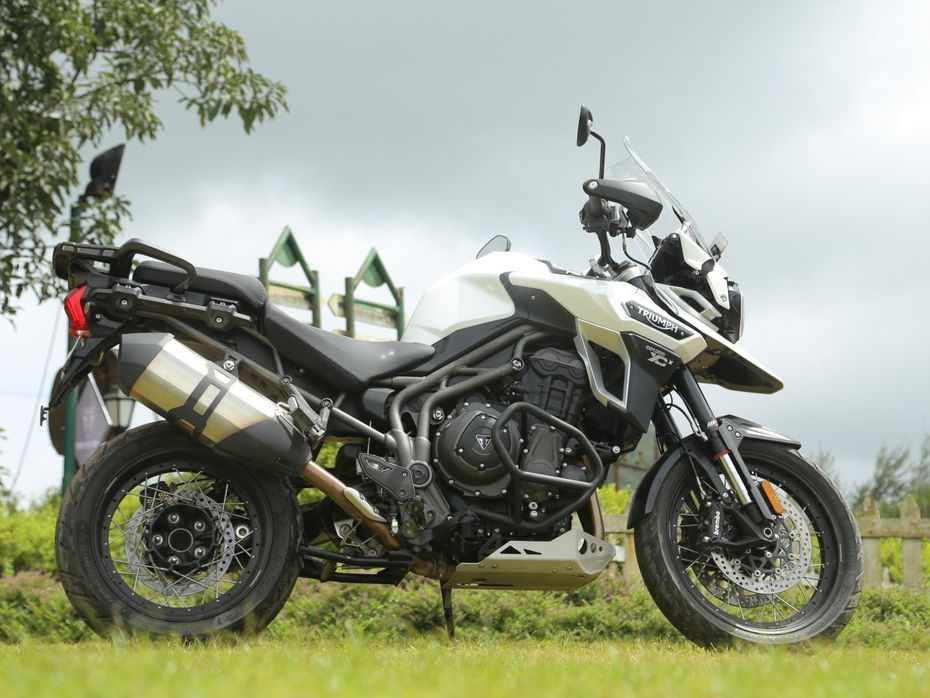
The right bike:
Well, you can go off-road in most bikes (barring cruisers and scooters). It is just a matter of how far you can venture. An ADV like the Triumph Tiger will get you further with its long-travel suspension, taller ground clearance and electronic aids but then it is no more than a tool. Depending on the hands at the helm you will flail or sail.
While ADVs are big and heavy they offer a good balance between on- and off-roadability. You can opt for the slightly less bulkier scramblers but they tend to pack less sophisticated hardware and their on-road performance can be a bit tame. Dirt bikes are another good option for their light weight and performance but they are not road-legal.
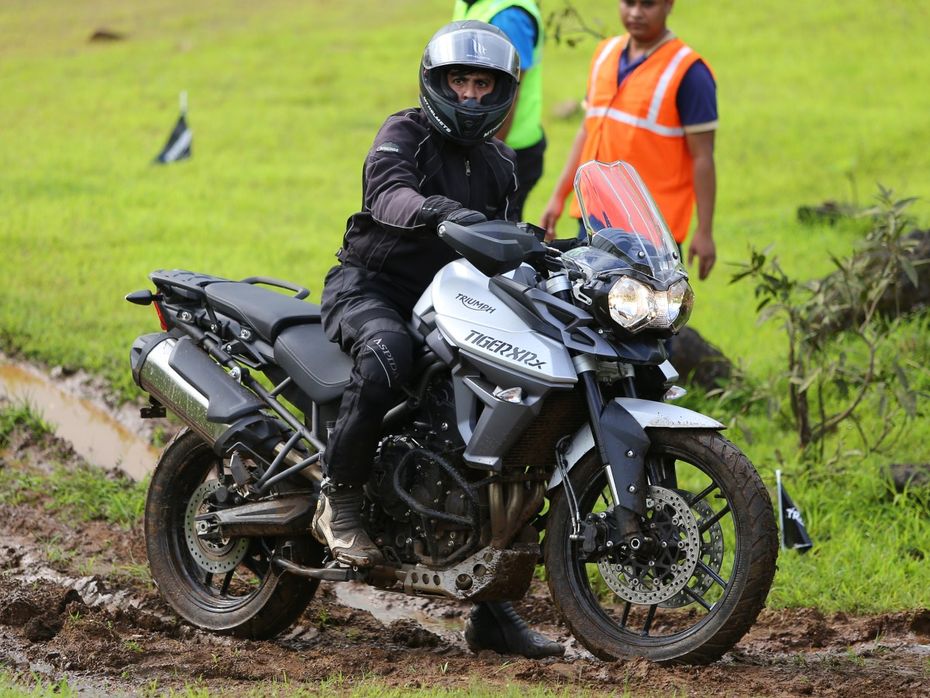
Getting on the bike:
Most off-road bikes you come across will have a tall seat owing to their long-travel suspension and big tyres. A person of average height will need some dexterity to mount aboard one. One way is to swing your leg across. Stand beside the bike and get the side stand out of the way. Hold the bike by the bars, turn the handlebar opposite to the side of where you are standing and apply the front brake. This movement allows you to lean the bike a bit towards you, making the seat height lower and more accessible. Swing your inner leg over the seat and place your foot on the footpeg. Push the peg down to straighten the bike.
Another technique is to have the bike rest on the side stand and place your left foot on the left side footpeg. Simply step up on the footpeg and mount the bike. Push on the right footpeg to straighten the bike.

On the move:
As you start to move on an off-road stretch, get your feet up on the footpeg as quickly as possible.This allows you to stand up quickly on the bike if the occasion calls for it.
While coming to a stop, sometimes you won't be able to park both your feet on the ground owing to the uneven surface. Shift your body weight to one side away from the bike and put one feet on the ground. This move helps if you have problems placing both feet on the ground owing to the high seat.
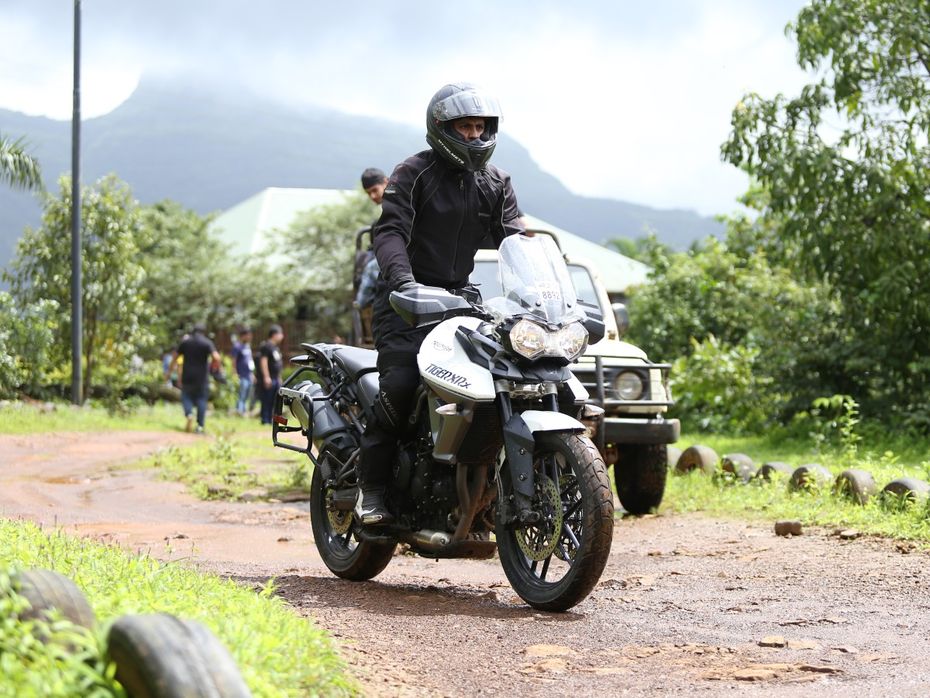
Standing on the bike:
Standing on the footpegs has many benefits. It gives you a better view over the handlebars especially if you have a taller windscreen. You have more control and range of movement as well. Standing transfers weight from the seat lower down to the footpegs. Lower CG means more stability. Practice first with the bike in a static position.
While standing on the footpegs, lock your knee and ankles against the tank and the side of the bike. Hold on to the handlebars loosely. Keep your shoulders and elbows loose. On the move, do not fight the front end. Let it go where it wants to, except down a mountain. The idea is to gently guide the bike where you want it to go.
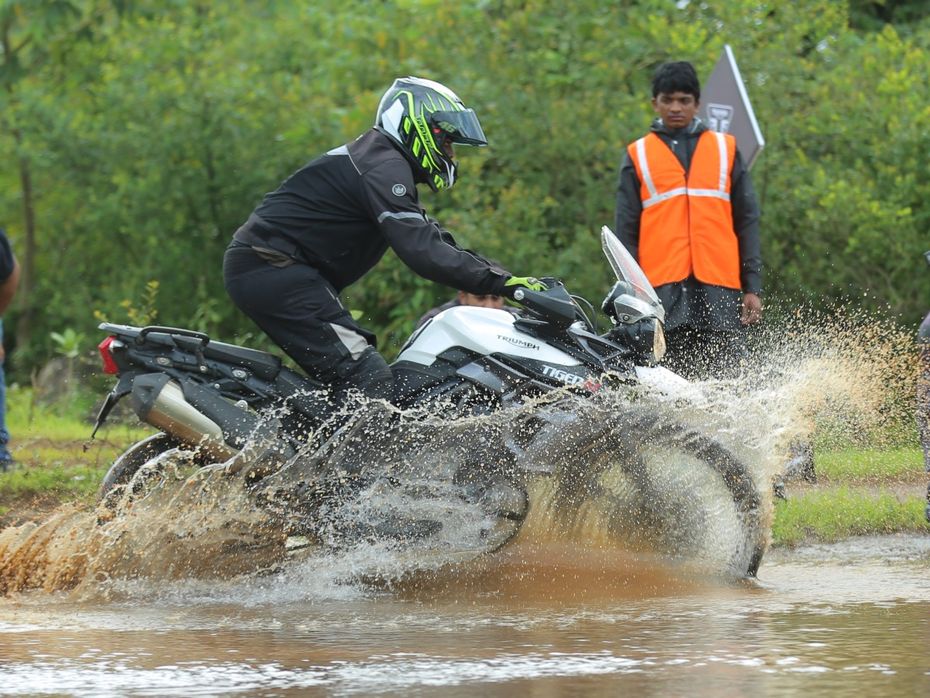
While accelerating, move your body weight forward. Ideally your hips should be ahead of the footpegs. While braking, your body weight should be backwards (hips behind the footpeg).
For braking off-road, use more of the rear brakes (it is fine if you lock the rear) while applying light pressure on the front brakes. If you get stuck in slush or in between rocks, push the bike back and forth. As you are pushing forward release the clutch and accelerate.

Turning off road:
Taking a turn off-road is the opposite of taking a turn on the road. Here you lean the bike away from the corner and try to keep your body as vertical as possible. For example, when you need to turn right, lean the bike to the left while pushing your body towards the right. The idea is to use your body as a counterweight. While executing the turn, you need to roll on and off the throttle while modulating the clutch. Push the outside elbow forward. A golden rule is ‘look where you want to go.’
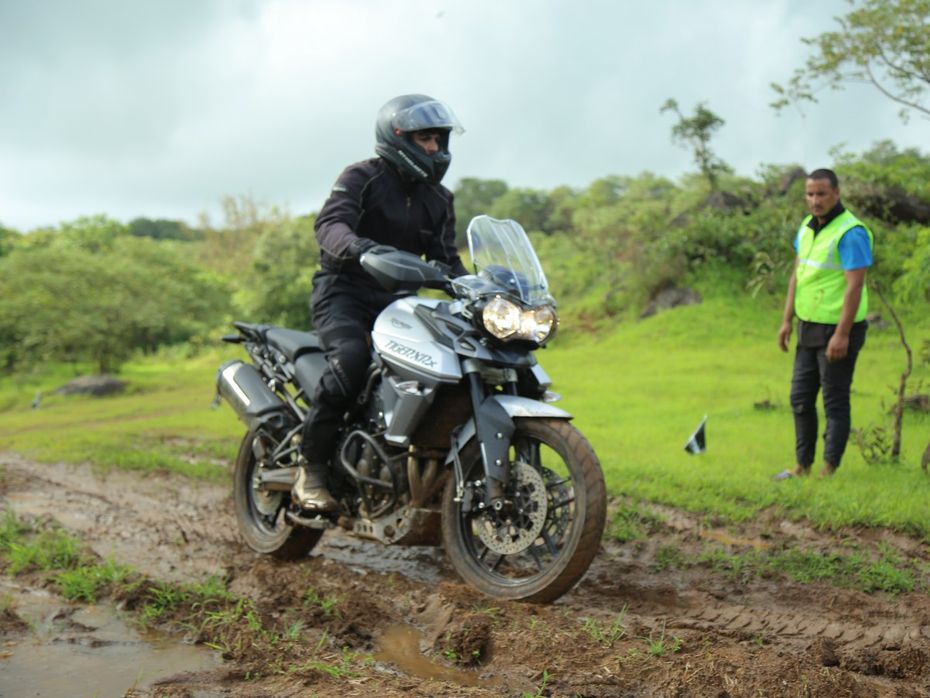
Throttle control:
Smooth inputs is the key to off-roading. Keep your index finger hovering over the front brake lever. Using one finger to brake will reduce the amount of front brake pressure. Keep a light grip on the throttle. A tight grip will have you inadvertently accelerate if you hit a bump and make you lose control of the bike.
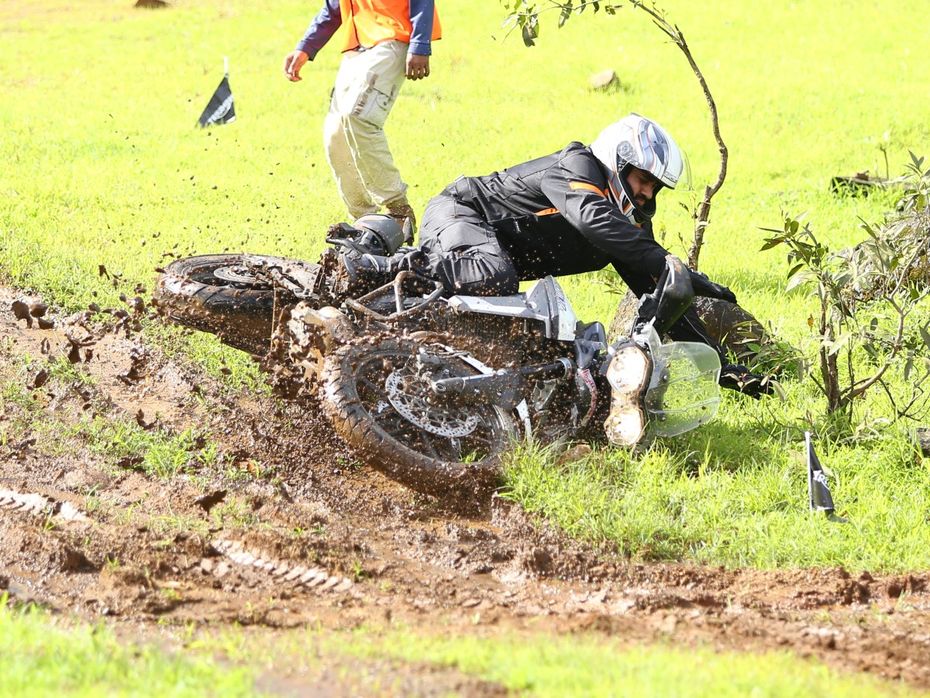
I dropped the bike!
Relax. Dropping the bike is a matter of if, not when, and a lot of experts have done it. If you reach a point where you feel the bike is about to tip over, gently lay down the bike to its side. ADV bikes are hardy and will survive falls so it is better to let go of the bike than sprain your muscle fighting a 200-plus kg bike.
While riding, if you feel the bike is about to tip over, extend your leg outside so that if the bike falls over, your leg does not get trapped under the bike. A 200-plus kg bike falling on your leg is a recipe for broken bones.
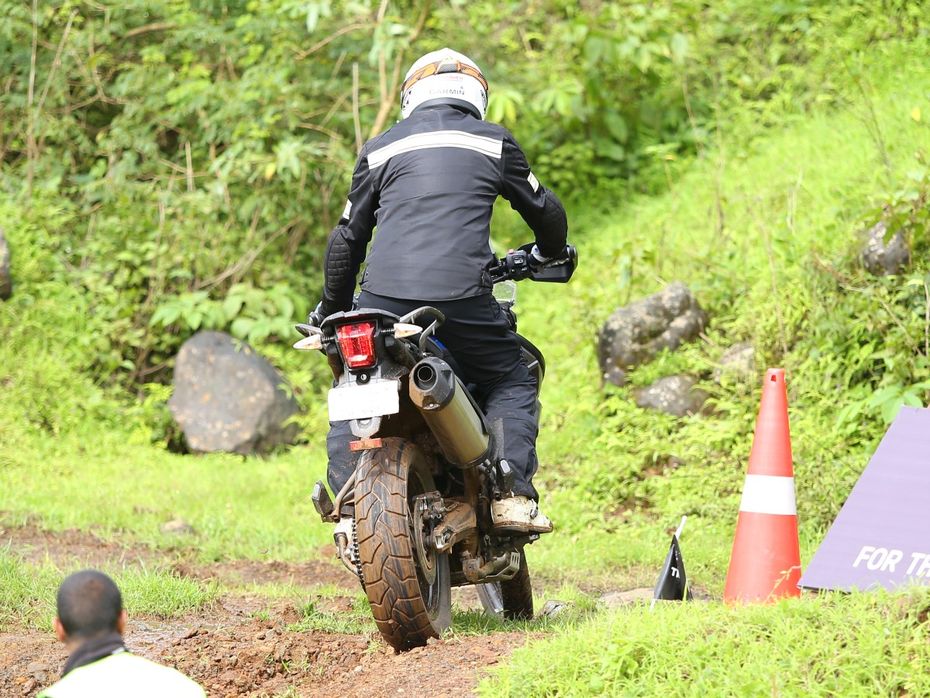
Picking it up:
This is the next logical step after dropping a bike. If you are riding in a group, you have your mates to help you. If not, make sure the bike is switched off and in gear. Get the handlebar turned towards the fallen side. Sit with your back against the fallen side, hold the inside handlebar and the rear grabrail. Slowly start lifting the bike using your legs. Take your time and look upwards while lifting the bike. This move will save you a sprained back. Check the bike for damages.
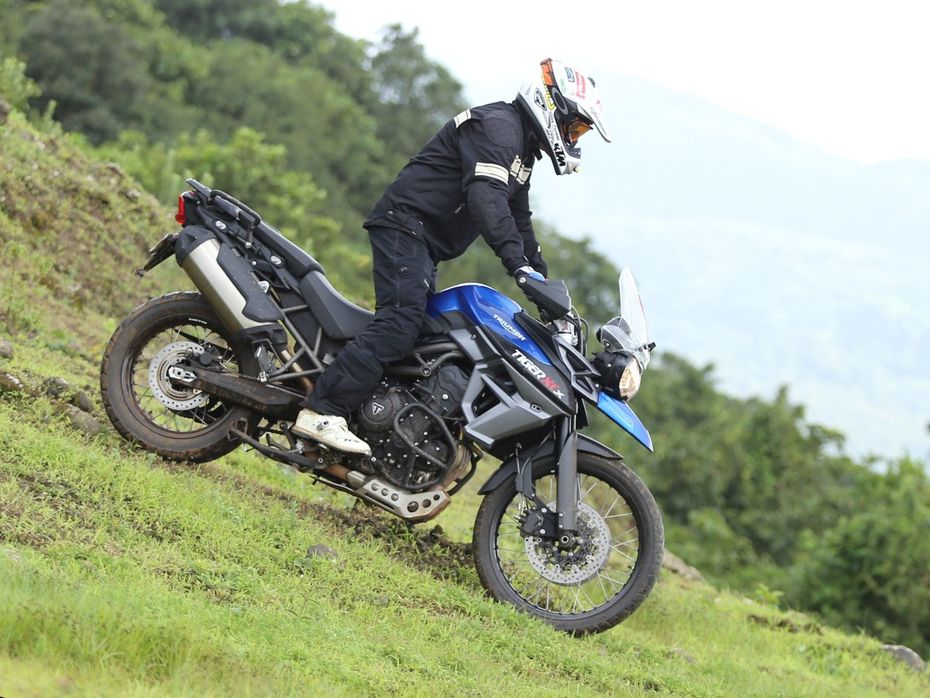
Going downhill:
Stand up on the bike for better front visibility. Choose your line down the trail before you venture downhill. While going downhill, use both brakes with smooth inputs. Take your time; slow is better. Keep body weight towards the back.
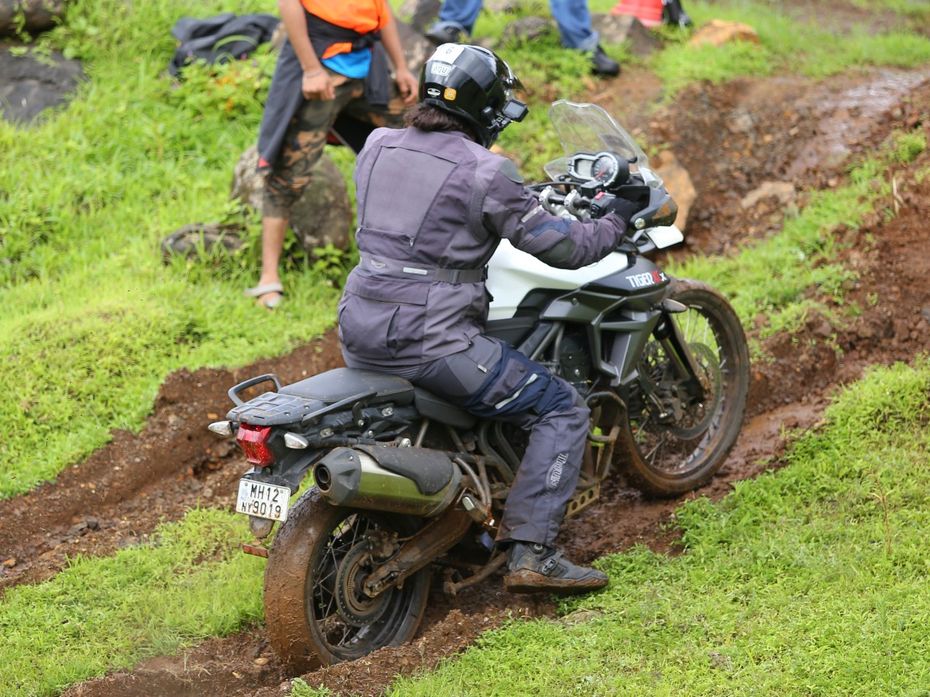
Going uphill:
To go uphill on loose surfaces, you need to use the right amount of power. Too less throttle input, and the bike will stall midway. Too much throttle, and the rear wheel will spin and you will lose speed. Momentum is key so if you can, start from a distance. Stand up on the bike and keep body weight towards the front. If you stall while going uphill, the normal reaction is to pull in the clutch. Let the bike stall. Use the front brake and the clutch to slowly get the bike downhill in reverse. Again, slower is better.

Water crossing:
If done right, water crossings are a fun part of off-roading. Looking at a water crossing should give you an inkling if it is doable. You would not be foolhardy enough to attempt to cross a raging torrent. Always walk through the crossing before you attempt it on your bike. It will give you an idea of the depth of the crossing and also reveal hidden surprises like dips or submerged rocks.
Make sure your bike’s engine air intake is above the water level at all times. Knowing your bike helps. It is a good idea to stand up on the bike while crossing as you can see what lied ahead.
Keep the bike in momentum throughout the crossing. Let the front end do its thing. Do not fight it. If your exhaust is mounted low and goes underwater, keep the throttle open. In this situation, if you close the throttle, absence of back pressure will have water will rush into the engine via the exhaust valve port. In case you stall the bike while the exhaust is under water, push the bike out and get all the water out of the exhaust.
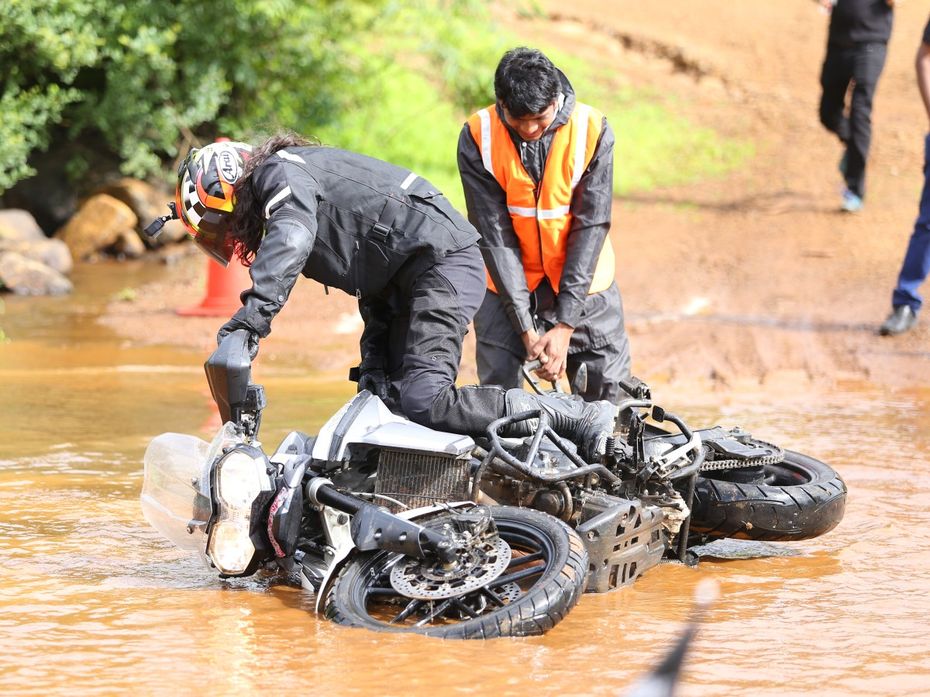
In case you drop the bike in water, hit the kill switch immediately. Do not start the bike. Push it across to dry land. Do not start the bike until you are sure the engine hasn't sucked in any water. If you are not sure, it will be cheaper to have the bike towed to the dealership than have a bill for a full engine rebuild.
Wearing the correct riding gear:
There is a right set of safety gear for each specific sport, riding included. Wearing the right riding gear will save you a lot of broken bones and expensive hospital bills.
Helmets:
There are three types of helmets (No, we are not counting those useless half face and ridiculous hat-type helmets). A full face helmet is reserved for road riding. An off-road helmet for well, off-road and enduro riding. You can use a full face helmet for off-road riding but it will feel bulky and heat up faster. An off-road helmet can be used for the road but the visor easily catches wind and can be quite uncomfortable. A dual-purpose helmet offers the best of both worlds. It looks like an off-road helmet but gets a face shield and a ventilated visor that makes it easier for road use as well.
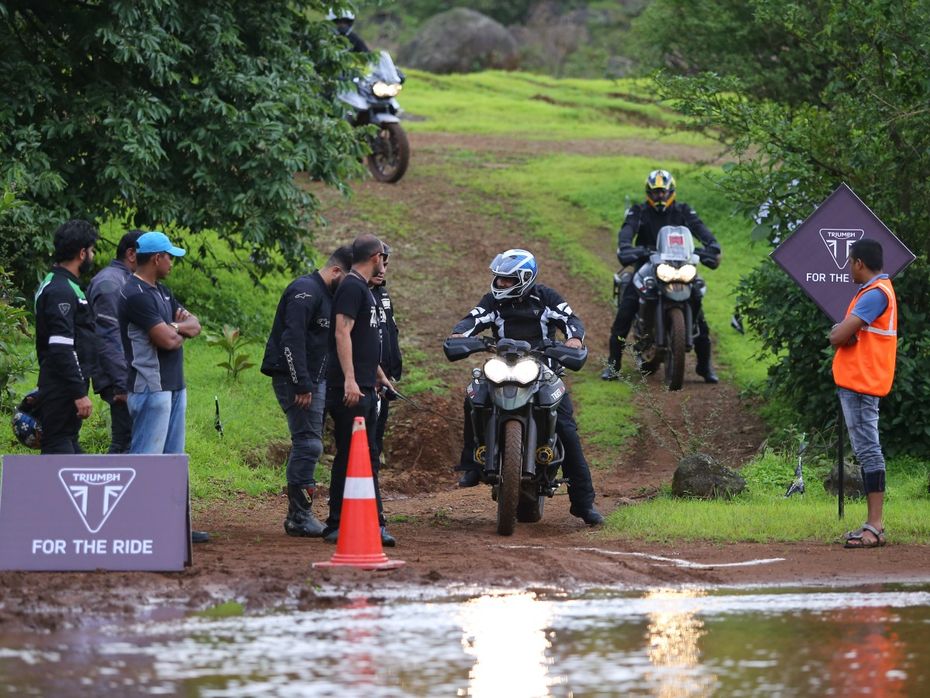
Riding gear:
A good adventure riding jacket or bionic jacket will keep your bones intact. Make sure you have a good back protector. Gloves again are different for different purposes. An off-road glove is lighter and has softer padding as it does not have to worry about abrasive road surfaces. Bionic knee braces are preferred for off-road use as they do not twist during a fall and sit more snug compared to riding pants.
Off-road riding boots are different from your track-spec riding boots. They are more rigid and have a sturdier sole at the front to survive hard knocks. The sole also has better grip and holds onto a bear claw footpeg well. You can use your track boots off-road but it is unlikely that its sole will survive long sessions of off-road riding.
A good set of riding gear is the best investment you can make as a bad fall could have you end up paying close to five times what you would spend on good quality riding gear.

Celebrating Independence With Triumph

Top 5 Touring Bikes To Look At Between 600cc - 800cc

Triumph to launch 2015 Tiger 800 XRx, XCx on March 12

10 Features The New Honda Amaze Could Get Over The Current Model

Royal Enfield Classic 650: Colours Explained

New Honda Amaze: 10 Features It Could To Get From The Elevate SUV

Honda Activa Electric Teased For The First Time

Hero XPulse 210 vs Hero XPulse 200 4V: Differences Explained

Honda Activa Electric Unveil Date Announced
 Maruti Dzire
Maruti Dzire
 Skoda Kylaq
Skoda Kylaq
 Mahindra Scorpio
Mahindra Scorpio
 Yamaha MT 15 V2.0
Yamaha MT 15 V2.0
 Tata Curvv
Tata Curvv
India's largest automotive community
 2024 Maruti Dzire CNG vs Hyundai Aura CNG: Which Sub-4m Sedan Stands Ahead With The Greener Fuel?
2024 Maruti Dzire CNG vs Hyundai Aura CNG: Which Sub-4m Sedan Stands Ahead With The Greener Fuel?
 Tata Harrier And Safari Get New ADAS Features! Colours Have Been Shuffled As Well
Tata Harrier And Safari Get New ADAS Features! Colours Have Been Shuffled As Well
 BREAKING: 2025 Kawasaki Ninja ZX-4R and ZX-4RR Launched
BREAKING: 2025 Kawasaki Ninja ZX-4R and ZX-4RR Launched
 Explore The New Maruti Dzire’s Mid-spec Vxi Variant In 10 Images
Explore The New Maruti Dzire’s Mid-spec Vxi Variant In 10 Images
 Hyundai Creta
Rs. 10.99 Lakh
Hyundai Creta
Rs. 10.99 Lakh
 Maruti Brezza
Rs. 8.34 Lakh
Maruti Brezza
Rs. 8.34 Lakh
 Maruti FRONX
Rs. 7.51 Lakh
Maruti FRONX
Rs. 7.51 Lakh
 Mahindra Thar ROXX
Rs. 12.99 Lakh
Mahindra Thar ROXX
Rs. 12.99 Lakh
 Mahindra Bolero
Rs. 9.79 Lakh
Mahindra Bolero
Rs. 9.79 Lakh